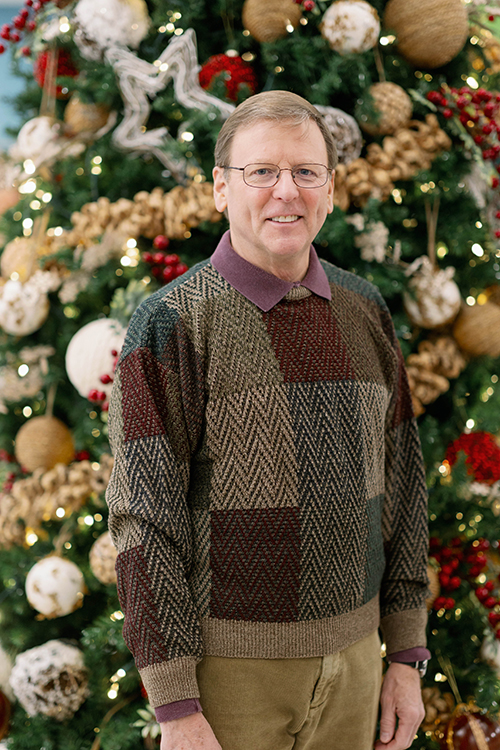Do you hear what I hear?
You know Dasher and Dancer and Prancer and Vixen and most likely the next line in this jolly Christmas song. Singing along to these tunes is a storied tradition of the holiday season, but most don’t know how carols came to be.

“Early carols in the Middle Ages were often circle dances, based on simpler lyrics, and set to folk-like music,” said Dr. Randall Wolfe, a piano and music theory professor at UD.
Wolfe teaches Music of Christmas for the University, a music appreciation course designed to highlight the history and global experience of the merry-time tunes.
It was his work directing the Cincinnati Boychoir for more than two decades that sparked his appreciation for Christmas music, he said. Wolfe was always looking for something new to perform with the choir to break up the monotony of the carols looping on department store speakers.
With the class commencing in August, his students get a jump on being in the holiday spirit. Wolfe put an end to the taboo debate as to when Christmas music season should begin. It is all about respect and giving an allowance for individuality, he said.
“We should respect people who start celebrating the holidays early to lift their spirits…” Wolfe said. “We should be empathetic to the person who does not want to hear Christmas music because of an association with the loss of a loved one during the holidays.”
Bing Crosby was the first person to commit carols to vinyl and jump-start the commercialization of Christmas music. He recorded “Silent Night,” which blurred the line between liturgical sacred carols and secular performance.
Some of the most well known and beloved Christmas tunes were never meant to celebrate the holiday, Wolfe said. “Jingle Bells” began as a Thanksgiving song and "Ave Maria" celebrates the Annunciation of Mary in March. "Winter Wonderland" and “Deck the Halls” simply welcome the winter season.
Then there are songs like Jamaica’s “Christmas in the Sun” that ring in the holidays using much warmer imagery than the northern hemisphere is used to.
“You can find [carols] everywhere,” Wolfe said. “We tend to forget when we're singing ‘White Christmas’ and ‘Let It Snow’ and all of these carols about the winter solstice that in the southern hemisphere, it's exactly the opposite.”
He said things like that make teaching his students about Christmas music even more jolly and fun. Wolfe loves to share global Christmas lore, including that llamas are used in place of reindeer leading Santa’s sleigh in some regions of Chile, while kangaroos are said to take a turn in Australia.
Wolfe loves to share global Christmas lore, including that llamas are used in place of reindeer leading Santa’s sleigh in some regions of Chile, while kangaroos are said to take a turn in Australia.
As for the one Christmas carol that’s closest to Wolfe’s heart, he said he doesn’t like to play favorites.
“One thing I tell my students is music appreciation is not about choosing favorites and being critical because music comes from people,” Wolfe said. “It comes from actual people's hearts and from their minds — from their position and their thoughts.”
He simply enjoys the cheer that the songs bring to people this time of year, be it Mariah Carey’s pop hit, “All I Want for Christmas” or the age-old classic, “Silent Night” — a song which he admits is his favorite, if he had to choose.